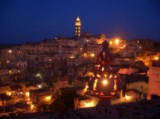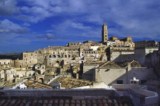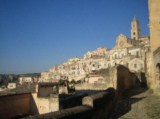|
MATERA - BASILICATA - SOUTH ITALY Matera, capital of the province, whose extraordinary past is full of history, art, culture and wise sayings, will astonish any visitor.
Matera is one of the most ancient towns in the world because of the continual presence of mankind from the Paleolithic age up to present times. An archaeologist from Matera, Domenico Ridola, after whom the National Museum has been named, supplied copious stratigraphic documentation especially regarding the different historic periods of the town from the Early Iron Age up to the Roman and Greek periods. In 664 Matera became part of the Longobard dukedom, in 938 it was sacked by the Saracens and in 1043 it was dominated by the Normans when Guglielmo Braccio di Ferro was nominated the Count of Matera and Apulia. After the Norman domination, Matera underwent the Hohenstaufen domination. In 1497 Giancarlo Tramontano, who came from Naples, became the Count of Matera but he was killed in 1514 by the insurgent populace who could not bear his persistent cruelty any longer. In 1663 Matera, that had already been annexed to the "Terra d'Otranto", became part of Basilicata as the capital of the region until 1806. Matera has been the capital of the province since 1927. |
||||||||





